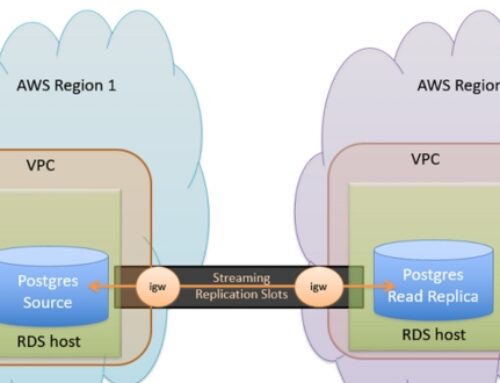Introduction to Salesforce CRM:
![]()
Salesforce CRM, or Customer Relationship Management, is a cloud-based platform designed to help businesses manage their relationships and interactions with customers and potential clients. It provides a comprehensive suite of tools and features that enable organizations to streamline their sales, marketing, customer service, and overall business processes. Salesforce CRM is widely recognized for its user-friendly interface, scalability, and ability to centralize data, making it a popular choice for businesses of all sizes.
Importance of Opportunity Tracking in the Sales Process:
Opportunity tracking is a crucial aspect of the sales process within Salesforce CRM. An opportunity in Salesforce refers to a potential deal or sale with a specific customer. Tracking opportunities allows sales teams to monitor and manage potential deals from the initial contact to the final sale, ensuring that no valuable leads or potential revenue opportunities are overlooked.
Pipeline Visibility: Opportunity tracking provides a clear and visual representation of the sales pipeline. This visibility allows sales teams and management to understand the current status of each opportunity, identify potential bottlenecks, and make informed decisions to optimize the sales process.
Strategic Planning: By tracking opportunities, sales teams can develop strategic plans to move prospects through the sales funnel effectively. This involves assigning tasks, setting follow-up reminders, and implementing targeted actions to increase the likelihood of closing deals.
Resource Allocation: Efficient opportunity tracking helps in allocating resources effectively. Sales teams can prioritize opportunities based on factors such as potential revenue, probability of closing, and strategic importance. This ensures that time and effort are invested where they are most likely to yield positive results.
Performance Analysis: Salesforce CRM provides analytics and reporting tools that enable sales teams to analyze their performance in real-time. By tracking opportunities, sales managers can identify trends, measure key performance indicators (KPIs), and make data-driven decisions to enhance overall sales effectiveness.
Customer Engagement: Opportunity tracking allows sales teams to stay engaged with customers throughout the entire sales cycle. Timely follow-ups, personalized communication, and a proactive approach contribute to building strong customer relationships, ultimately leading to successful deals and customer satisfaction.
Opportunity tracking in Salesforce CRM is instrumental for sales teams to manage their sales pipeline effectively, make informed decisions, and drive successful outcomes. It enhances the overall sales process by providing visibility, facilitating strategic planning, optimizing resource allocation, enabling performance analysis, and fostering meaningful customer engagement.
Understanding Salesforce CRM
![]()
Salesforce CRM, or Customer Relationship Management, is a powerful cloud-based platform that enables businesses to manage their interactions and relationships with customers and potential customers. It is designed to be a comprehensive solution that covers various aspects of customer management, including sales, marketing, customer service, and more.
Overview of Salesforce CRM:
Cloud-Based Platform:
Salesforce CRM operates in the cloud, which means that users can access it from anywhere with an internet connection. This cloud-based architecture ensures real-time data accessibility and collaboration among teams.
Comprehensive Customer Management:
Salesforce provides a 360-degree view of each customer, consolidating information from various touchpoints. This includes contact details, communication history, purchase history, and customer preferences.
Modules and Applications:
Salesforce CRM is modular, allowing businesses to tailor the platform to their specific needs. Users can add applications and features, such as Sales Cloud for sales automation, Service Cloud for customer service, Marketing Cloud for marketing automation, and more.
Automation and Workflows:
Salesforce automates repetitive tasks and streamlines workflows, helping businesses save time and resources. Automated processes can include lead assignment, email follow-ups, and other routine tasks, allowing sales teams to focus on high-value activities.
Analytics and Reporting:
The platform offers robust analytics and reporting tools, providing insights into sales performance, customer behavior, and other key metrics. Customizable dashboards make it easy for users to visualize and analyze data to make informed decisions.
Integration Capabilities:
Salesforce can integrate with a variety of third-party applications and services, creating a unified ecosystem. This ensures a seamless flow of data between Salesforce and other tools, enhancing overall operational efficiency.
Streamlining Sales Processes:
Lead Management:
Salesforce helps businesses capture and manage leads efficiently. It enables the tracking of leads through the sales pipeline, ensuring that opportunities are not overlooked.
Opportunity Management:
The platform assists in managing sales opportunities by providing a clear view of the sales pipeline. Users can track deal stages, forecast revenue, and prioritize deals for better conversion rates.
Communication and Collaboration:
Salesforce facilitates communication and collaboration among sales teams. Whether it’s sharing customer information or collaborating on deals, the platform enhances teamwork and ensures that everyone is on the same page.
Sales Forecasting:
With the aid of advanced analytics, Salesforce helps businesses predict future sales and revenue trends. This forecasting capability allows for better resource allocation and strategic planning.
Mobile Accessibility:
Salesforce is accessible through mobile devices, enabling sales teams to stay connected and productive while on the go. This accessibility ensures that critical information is always at the fingertips of the sales representatives.
Salesforce CRM is a comprehensive solution that empowers businesses to manage and optimize their customer relationships. By streamlining sales processes, automating tasks, and providing valuable insights, Salesforce contributes to increased efficiency, improved customer satisfaction, and ultimately, business growth.
Basics of Opportunity Tracking
Defining Opportunities in a Sales Context:
- In sales, an opportunity refers to a potential sale or a chance to generate revenue for a business. It typically arises when a lead or prospect expresses interest in a product or service and there is a possibility of converting that interest into a successful sale.
- Opportunities are often characterized by specific details such as the potential value of the deal, the stage of the sales cycle, key contacts involved, and any other relevant information that helps sales teams understand and pursue the potential sale.
Significance of Tracking Opportunities for Business Growth:
- Revenue Generation: By effectively managing and progressing through opportunities, businesses can convert potential sales into actual revenue. This directly impacts the financial health and growth of the organization.
- Strategic Decision-Making: Monitoring opportunities provides valuable insights into sales trends, customer preferences, and market demands. This data enables businesses to make informed and strategic decisions to adapt to changing market conditions and stay ahead of the competition.
- Resource Allocation: Efficient tracking helps in allocating resources effectively. By understanding which opportunities are most likely to convert, businesses can focus their efforts, time, and resources on high-potential deals, maximizing the return on investment.
- Customer Relationship Management: Opportunities often involve interactions with potential customers. Effective tracking not only aids in closing deals but also in building and maintaining strong customer relationships, fostering loyalty, and increasing the likelihood of repeat business.
Salesforce’s Role in Efficient Opportunity Management:
- Centralized Database: Salesforce provides a centralized platform where all information related to opportunities can be stored and accessed. This includes details about leads, contacts, sales stages, and communication history.
- Automation and Workflow: Salesforce’s automation features streamline the opportunity management process. From lead generation to deal closure, automated workflows can help in progressing opportunities through different stages, reducing manual effort and minimizing errors.
- Analytics and Reporting: Salesforce offers robust analytics and reporting tools that allow businesses to gain insights into their sales performance. This includes tracking key metrics related to opportunities, such as win rates, conversion rates, and average deal size.
- Collaboration: Salesforce facilitates collaboration among team members by providing a shared platform for communication, document sharing, and real-time updates on opportunities. This enhances teamwork and ensures that everyone involved is on the same page.
Opportunity Stages and Pipeline Management
In Salesforce, opportunity stages refer to the different phases that a potential sale progresses through within the sales process. These stages are customizable and can be tailored to match the specific steps involved in your organization’s sales cycle. Here’s a typical example of opportunity stages in Salesforce:
- Prospecting: This stage involves identifying potential leads or opportunities that may be interested in your product or service.
- Qualification: During this stage, sales representatives assess the lead’s needs, budget, timeline, and decision-making process to determine if they are a good fit for your offering.
- Needs Analysis: In this stage, the sales team delves deeper into the prospect’s requirements and challenges to understand how your product or service can address their specific needs.
- Proposal/Quote: Once the prospect’s needs have been identified, the sales team creates and presents a proposal or quote outlining the solution and its associated costs.
- Negotiation/Review: This stage involves negotiating terms, addressing any objections, and finalizing the details of the deal.
- Closed-Won: When the prospect agrees to move forward and commits to purchasing your product or service, the opportunity is marked as “Closed-Won.”
- Closed-Lost: If the prospect decides not to move forward with the purchase or chooses a competitor’s offering, the opportunity is marked as “Closed-Lost.”
How opportunity stages contribute to pipeline management:
- Visibility: By tracking opportunities through various stages, sales managers gain visibility into the health of the sales pipeline. They can quickly identify bottlenecks, analyze conversion rates at each stage, and predict future revenue based on the opportunities in the pipeline.
- Forecasting: Opportunity stages provide a basis for accurate sales forecasting. By analyzing historical data on conversion rates and average deal size at each stage, sales leaders can forecast future revenue with greater precision, helping in resource allocation and strategic planning.
- Sales Process Optimization: Opportunity stages help identify areas for process improvement. By analyzing where deals often stall or get stuck, sales teams can refine their sales process, implement targeted training, and provide resources to address common challenges, ultimately improving overall sales efficiency and effectiveness.
- Prioritization: Opportunity stages help sales reps prioritize their activities. By focusing on opportunities in the most advanced stages of the pipeline, reps can allocate their time and resources more effectively, increasing their chances of closing deals and meeting targets.
As for best practices for managing opportunities through different stages:
- Regular Updates: Ensure that opportunity stages are updated regularly to reflect the current status of each deal. This provides accurate visibility into the pipeline and facilitates better decision-making.
- Clear Criteria: Define clear criteria for advancing opportunities to the next stage. This helps maintain consistency across the sales team and ensures that only qualified opportunities progress through the pipeline.
- Sales Coaching: Provide coaching and support to sales reps to help them navigate opportunities through various stages effectively. This may involve training on sales techniques, objection handling, or product knowledge.
- Use Automation: Leverage automation tools within Salesforce to streamline repetitive tasks, such as updating opportunity stages or sending follow-up emails. This frees up time for sales reps to focus on high-value activities like building relationships with prospects.
Creating Opportunities in Salesforce
Creating Opportunities in Salesforce is a pivotal aspect of managing sales processes efficiently. When initiating a new opportunity in Salesforce, it’s imperative to follow a structured process to ensure all relevant information is captured accurately. This walkthrough typically begins with accessing the Salesforce dashboard and navigating to the Opportunities section. From there, users can select the option to create a new opportunity.
In this process, several key fields need to be filled out to provide comprehensive information about the opportunity. These fields often include the opportunity name, the associated account or lead, the expected close date, the stage of the opportunity in the sales pipeline, the amount or potential revenue, and any relevant notes or details regarding the opportunity.
The opportunity name should be descriptive and easily identifiable, providing clarity to sales team members and managers alike. Associating the opportunity with the appropriate account or lead ensures proper linkage within the Salesforce ecosystem, facilitating seamless communication and collaboration across teams.
The expected close date plays a crucial role in forecasting and planning sales activities. It helps in prioritizing opportunities and allocating resources effectively. Additionally, accurately updating the stage of the opportunity in the sales pipeline provides visibility into the progress of the deal, allowing for informed decision-making and strategic adjustments.
Including the potential revenue associated with the opportunity enables sales teams to prioritize high-value deals and focus their efforts accordingly. This figure serves as a benchmark for measuring performance and forecasting future revenue streams.
Lastly, maintaining detailed notes and relevant information within the opportunity record ensures comprehensive documentation of interactions, negotiations, and any other pertinent details. This fosters transparency and accountability within the sales process, enabling teams to pick up where others left off seamlessly and providing valuable insights for future engagements.
Emphasizing the importance of accurate data entry is paramount for effective tracking and reporting within Salesforce. Inaccurate or incomplete information can lead to misunderstandings, miscommunications, and missed opportunities. By diligently entering and updating data, sales teams can leverage Salesforce’s powerful analytics and reporting features to gain actionable insights, identify trends, and drive informed decision-making.
Creating opportunities in Salesforce is not merely a procedural task but a strategic endeavor aimed at maximizing sales effectiveness and driving business growth. By paying attention to key fields and ensuring accurate data entry, organizations can harness the full potential of Salesforce to cultivate meaningful customer relationships and achieve their sales objectives.
Customizing Opportunity Tracking
Salesforce offers robust customization options for opportunity tracking, allowing businesses to tailor the system to meet their specific needs effectively.
- Custom Fields: Businesses can create custom fields to capture unique information relevant to their sales process. These fields can include specific product details, customer preferences, or any other data points crucial for tracking opportunities effectively. Custom fields allow businesses to tailor their opportunity tracking to match their unique sales processes and information requirements.
- Layouts: Salesforce enables users to customize the layout of opportunity records, arranging fields and sections in a way that best suits their workflow. Businesses can create multiple layouts to accommodate different user roles or stages of the sales process. For example, a sales rep may have a simplified layout focused on essential information, while a sales manager may have a more comprehensive view with additional analytics and forecasting tools.
- Record Types: Record types allow businesses to define different sets of fields, picklist values, and page layouts for different types of opportunities. This functionality is particularly useful for organizations with diverse product lines, sales channels, or target markets. By defining multiple record types, businesses can ensure that each opportunity is tracked and managed according to its unique characteristics and requirements.
- Workflow Rules and Automation: Salesforce’s workflow rules and automation capabilities can further enhance opportunity tracking customization. Businesses can automate routine tasks, such as assigning leads to sales reps, sending follow-up emails, or updating opportunity stages based on predefined criteria. By automating repetitive tasks, businesses can streamline their sales processes, improve efficiency, and ensure consistency in opportunity management.
- Integration with Third-Party Apps: Salesforce offers integration capabilities with a wide range of third-party applications, allowing businesses to extend the functionality of their opportunity tracking system. Integration with marketing automation tools, financial systems, or custom analytics platforms can provide businesses with additional insights and efficiencies in managing their opportunities.
Salesforce’s customization options for opportunity tracking empower businesses to tailor the system precisely to their unique requirements. Whether it’s custom fields, layouts, record types, workflow automation, or integration with third-party apps, businesses can leverage these tools to optimize their sales processes, improve productivity, and drive better outcomes.
Reporting and Analytics

Reporting and analytics play a crucial role in tracking and optimizing sales performance within Salesforce. Salesforce offers a robust suite of reporting tools that enable businesses to gain valuable insights into their sales processes, identify trends, and make data-driven decisions to drive growth.
Reporting Capabilities: Salesforce provides a variety of reporting capabilities for opportunity tracking. Users can create custom reports tailored to their specific needs, such as tracking sales pipeline stages, forecasting revenue, analyzing win rates, and monitoring sales team performance. These reports can be generated based on various criteria, including time period, sales rep, product category, and more.
Types of Reports and Dashboards: Salesforce offers a range of pre-built and customizable reports and dashboards to analyze sales performance. Some common types of reports include:
- Pipeline Reports: These reports track the progression of opportunities through the sales pipeline, providing insights into the volume and value of deals at each stage.
- Win/Loss Analysis: These reports analyze the factors contributing to won or lost opportunities, helping sales teams identify patterns and improve their sales strategies.
- Forecast Reports: Forecast reports help predict future revenue based on historical data and current pipeline opportunities, aiding in resource allocation and goal setting.
- Activity Reports: These reports track sales activities such as calls, emails, meetings, and tasks, providing visibility into sales rep productivity and engagement.
- Dashboards in Salesforce allow users to visualize key metrics and trends from multiple reports in a single, customizable interface. Sales leaders can create dashboards to monitor real-time performance, track progress towards goals, and identify areas for improvement.
Importance of Data-Driven Decision-Making: In today’s competitive business landscape, data-driven decision-making is essential for optimizing sales performance and staying ahead of the competition. By leveraging Salesforce’s reporting and analytics capabilities, businesses can access real-time insights into their sales processes, customer behavior, and market trends. This enables sales teams to identify opportunities for growth, prioritize leads, tailor their sales strategies, and allocate resources more effectively. Ultimately, data-driven decision-making empowers businesses to make informed choices that drive revenue growth and improve overall sales effectiveness.
Best Practices for Successful Opportunity Tracking
- Data Hygiene: Maintaining clean and accurate data is crucial for effective opportunity tracking. This involves regularly reviewing and updating opportunity records to ensure that information such as contact details, deal stages, and potential revenue is current and correct. Implementing validation rules and data integrity checks can help enforce data hygiene standards.
- Regular Updates: Encourage sales representatives to consistently update opportunity records with the latest information after every interaction with prospects or customers. This includes logging communication activities, updating deal stages, and documenting any changes in requirements or timelines. Regular updates ensure that the opportunity pipeline reflects the most up-to-date status of each deal.
- Clear Opportunity Stages: Define clear and consistent opportunity stages that align with your organization’s sales process. This makes it easier for sales representatives to track the progress of each deal and for managers to forecast revenue accurately. Ensure that the stages are well-defined and that there is clarity on the criteria for moving opportunities from one stage to the next.
- Team Collaboration: Foster collaboration among team members by encouraging them to share information and insights within Salesforce. Utilize features such as Chatter to facilitate communication and collaboration in real-time. Encourage sales reps to collaborate on opportunities by assigning team members to specific deals or by using collaborative tools like shared dashboards and reports.
- Training and Adoption: Provide comprehensive training to ensure that all team members understand how to effectively use Salesforce for opportunity tracking. Invest in ongoing education and support to encourage adoption and maximize the benefits of the platform. Regularly review usage metrics and address any issues or gaps through additional training or support resources.
- Integration with Other Systems: Integrate Salesforce with other relevant systems, such as marketing automation platforms or customer service tools, to ensure a seamless flow of data across the organization. This integration enables a holistic view of customer interactions and allows for more informed decision-making in opportunity tracking and management.
Real-world examples of companies achieving success with Salesforce Opportunity Tracking could include:
Company A: Company A, a software-as-a-service (SaaS) provider, increased its sales pipeline visibility and accuracy by implementing Salesforce Opportunity Tracking. By enforcing data hygiene practices and providing regular training to its sales team, Company A achieved a significant improvement in forecasting accuracy and sales performance. The ability to track opportunities through defined stages and collaborate effectively within Salesforce led to a higher conversion rate and increased revenue.
Company B: Company B, a manufacturing company, improved its sales team collaboration and efficiency by integrating Salesforce with its existing ERP system. This integration allowed seamless data synchronization between sales and production teams, enabling better coordination in opportunity tracking and order fulfillment. As a result, Company B experienced reduced lead times, improved customer satisfaction, and increased cross-selling opportunities.
Conclusion
Salesforce CRM opportunity tracking is a pivotal element in the success of modern sales operations. By effectively managing opportunities, organizations can drive revenue growth, enhance customer relationships, and gain a competitive edge in the market. This comprehensive guide has provided insights into the fundamental concepts of Salesforce opportunity tracking, best practices, and real-world applications. As businesses continue to navigate the dynamic landscape of sales and customer relations, mastering the art of opportunity tracking with Salesforce CRM remains a key strategic imperative.
A sales stage in Salesforce Opportunity Tracking represents a specific phase in the sales process, indicating where an opportunity stands in the pipeline. Examples of sales stages include “Prospecting,” “Qualification,” “Proposal/Quote,” “Negotiation,” and “Closed-Won/Closed-Lost.”
You can track the progress of an opportunity in Salesforce CRM by regularly updating its stage, adding relevant activities (calls, emails, meetings), and reviewing key metrics such as opportunity amount, close date, and probability of closure.
Opportunity pipeline management in Salesforce CRM involves visualizing and managing the flow of potential deals through various stages of the sales process. It helps sales teams prioritize opportunities, identify bottlenecks, and forecast revenue accurately.
To forecast sales using Salesforce Opportunity Tracking, sales managers can analyze historical data, review current opportunities in the pipeline, consider factors such as close probability and deal size, and use forecasting tools within Salesforce to project future revenue.
Yes, you can customize sales stages in Salesforce CRM to align with your organization’s specific sales process. Admins can add, remove, or modify sales stages based on their business requirements through Salesforce’s customization options.








